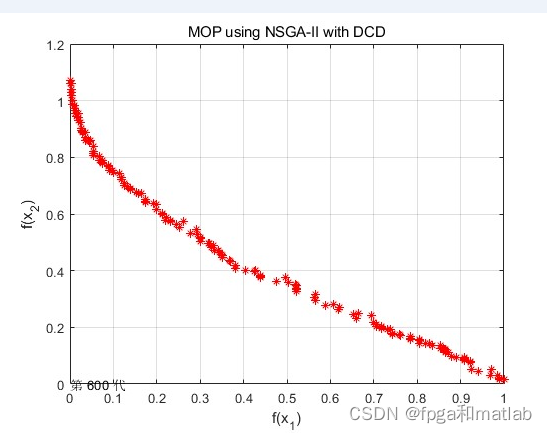fmw oracle fusion middleware,Oracle Fusion Middleware 介绍
Oracle融合中间件是一个全面产品集合,它包括 J2EE ,应用程序开发工具 , 集成解决方案,身份管理,协作和商业智能报告等等。。提供了对开发,部署,管理的全面支持。Middleware is the software layer that liesbetween the operating system and the applications on each side of a dist.
Oracle融合中间件是一个全面产品集合,它包括 J2EE ,应用程序开发工具 , 集成解决方案,身份管理,协作和商业智能报告等等。。提供了对开发,部署,管理的全面支持。
Middleware is the software layer that liesbetween the operating system and the applications on each side of a distributed computer network as shown inFigure 1-1. Typically, middleware supports complex, distributed business software applications.

Middleware includesWeb servers, application servers, content management systems, and similar tools that support application development and delivery. It is especially integral(完整的) to information technology based on Extensible Markup Language (XML), Simple Object Access Protocol (SOAP), Web services, SOA, Unicode, Web 2.0 infrastructure, and Lightweight Directory Access Protocol (LDAP). Textual data is represented in the Unicode character set(文本信息被unicode字符集代替) to support data exchange in any language.UTF-8 is used as the standard encoding for transporting data for optimal compatibility and efficiency, while traditional non-Unicode encodings can also be used where supported.
理解Fusion Middleware 是做什么的:
The function of middleware is to mediate interaction between the parts of an application, or between applications.
Applications use intermediate(中间的) software that resides on top of the operating systems and communication protocols to perform the following functions:
Hide the distributed nature of the application.An application represents a collection of interconnected parts that are operational and running in distributed locations, out of view.(隐藏应用的分布式的特性,一个应用代替了 一个用内部连接的分布式 的多个应用。)
Hide the heterogeneity(多样的,不均匀的) of the enterprise. This includes the hardware components used, computer operating systems, and communication protocols.(隐藏了硬件层面的多样,操作系统层面的多样)
Provide uniform, standard, high-level interfaces to the application developers and integrators, so that applications can be easily composed, reused, ported, and made to interoperate.(为应用的开发和集成提供统一的、标准的、高水平的接口,这样一来,应用就能非常简单的重用,移植,内部的交互等等。)
Supply a set of common services to perform various general purpose functions to avoid duplicating efforts, and to facilitate collaboration between applications.(支持用一系列的通用服务去完成特定的功能,从而避免了重复的工作。促进了应用程序之间的合作)
Middleware makes application development easier, by providing common programming abstractions, by masking application heterogeneity and the distribution of the underlying hardware and operating systems, and by hiding low-level programming details.
Figure 1-2provides an overview of the Oracle Fusion Middleware architecture with a common Oracle SOA installation.

下面是EBS R12.2的 FMW_home目录结构:


除了架构方面,中间件设计的主要问题涉及到分布式系统的各个方面。任何中间件系统依赖于一个通信层,这个通信层允许其不同的部分进行互操作。此外,通信层是middleware本身提供给应用程序的一个功能,在通信层中所述通信实体可以是不同的角色,如客户端服务器或 对等网络。中间件允许不同的交互模式(同步调用,异步消息传递,通过共享对象协调)体现在不同的模式
Therefore, middleware system design faces several challenges:
Middleware systems rely on interception and indirection mechanisms, which induce performance penalties. Adaptable middleware introduces additional indirections, which make the situation even worse.(中间件系统依赖于拦截和间接机制,从而引起的性能损失。适应性的中间件引入了额外的间接性,这使情况变得更糟。)
As applications become more and more interconnected and interdependent, the number of objects, users, and devices tends to increase. This poses the problem of the scalability of the communication and object management algorithms, and increases the complexity of administration. The availability, reliability, concurrency, security, and performance of applications may also be an issue.(因为应用程序变得越来越相互关联和相互依存的,对象,用户和设备的数量趋于增加。这又引发了对通信 和 对象管理算法 的可扩展性的问题,并增加了管理的复杂性。可用性,可靠性,并发性,安全性,以及应用程序的性能也可能是一个问题。)
Widespread computing is a vision of the near future, in which an increasing number of devices embedded in various physical objects participate in a global information network. Mobility and dynamic reconfiguration will be dominant features, requiring permanent adaptation of the applications.(全球分布式的计算是在不久的将来的愿景,其中越来越多的嵌入在各种物理设备对象的参与全球信息网络。移动性和动态重配置将是主要特征,这就要求应用程序具有永久的适应行。)
Managing large applications that are heterogeneous, widely distributed, and in permanent evolution raises many questions, such as consistent observation, security, trade-offs between autonomy and interdependence for the different subsystems, and definition and implementation of resource management policies.(管理大型异构的,分布广泛,长期变动的应用程序会产生许多问题,如一致的观察,安全性,自主性和相互依存的不同子系统之间的权衡,以及定义和实现资源的管理政策。)
Oracle Fusion Middleware提供了如下解决方案:
Specifically, Oracle Fusion Middleware offers the following solutions through its middleware design:
Development Tools(开发工具): A unified SOA development tool and framework. An integrated, but modular, set of development tools to build complete applications, rather than using lots of specialized tools. The design tool includes a single design environment for user interface, business logic, service composition, business process or workflow, business rules, and business intelligence. The design tool enables simplified design and debugging, and to improve productivity.Includes Oracle JDeveloper, Oracle TopLink, Oracle Application Development Framework, and Oracle Eclipse.
User Interaction(用户交互): A single, end-user environment that enable access to enterprise applications, business processes, business intelligence and to share information with each other. This end user environment is multi-channel allowing it to be accessed from a variety of different clients (mobile clients, desktop clients, Voice-over IP (VOIP) clients) withOracle WebCenter Portal.(通过webcenter Potal提供一个终端用户环境,使终端用户能够通过各种方式访问调用企业应用程序)
Business Intelligence(商业智能): A suite of business intelligence tools from extract, transform, and load to integrate data into warehouses; query, analysis, and reporting tools for decision support; scorecards to compare how the business is doing against key performance indicators; and alerting to drive notifications to users about problems in the business software.(一个商业智能套件的组件,完成抽取,转换,装载,集成数据到数据仓库的过程。然后查询,分析来支持商业决策)
Content Management(内容管理): A repository within which to manage documents, digital assets, scanned images and other forms of content; to integrate this content with a company's enterprise applications, Web sites, and business processes.(一个管理文档、数字资产、扫描图像和其他类型的内容的仓库。通过企业级的应用程序、web站点、商业进程来集中管理这些内容)
SOA(面向服务的架构): A means of using existing investments in applications and systems most efficiently to be able to focus more resources and budget on innovation and on delivering new business services.(最大效率的 使用已存在的在应用程序和系统上的投资,来达到在创新和提供新商业服务上的更多资源和预算)
Application Server(应用服务器): A standards-based Java EE application server to run the enterprise applications and provide the Web services infrastructure for interoperability.
Integration and Business Process Management (BPM)(集成和商业进程管理): A standards-based service bus to connect applications with each other and with legacy systems(现有的旧系统) using messaging; a BPM or workflow engine to connect the application into a business process or workflow; and business activity monitoring and optimize business processes in real time.
Security and Identity Management(安全和身份管理): Security administration across multiple applications and systems in an enterprise, by centralizing how users are created and provisioned, their identities, and roles and by enabling them to have single sign-on access. Includes Oracle Internet Directory, Oracle Virtual Directory, Oracle Directory Integration Platform, Oracle Identity Federation.
Enterprise Management(EM): Operations and administration by runningon a grid architecturewith grouping, backup, and other high availability technologies, and integrating with Oracle Enterprise Manager for systems management.Includes Fusion Middleware Control, Oracle WebLogic Server Administration Console, Oracle WebLogic Scripting Tool, Oracle Process Manager and Notification Server.
更多推荐
 已为社区贡献1条内容
已为社区贡献1条内容









所有评论(0)